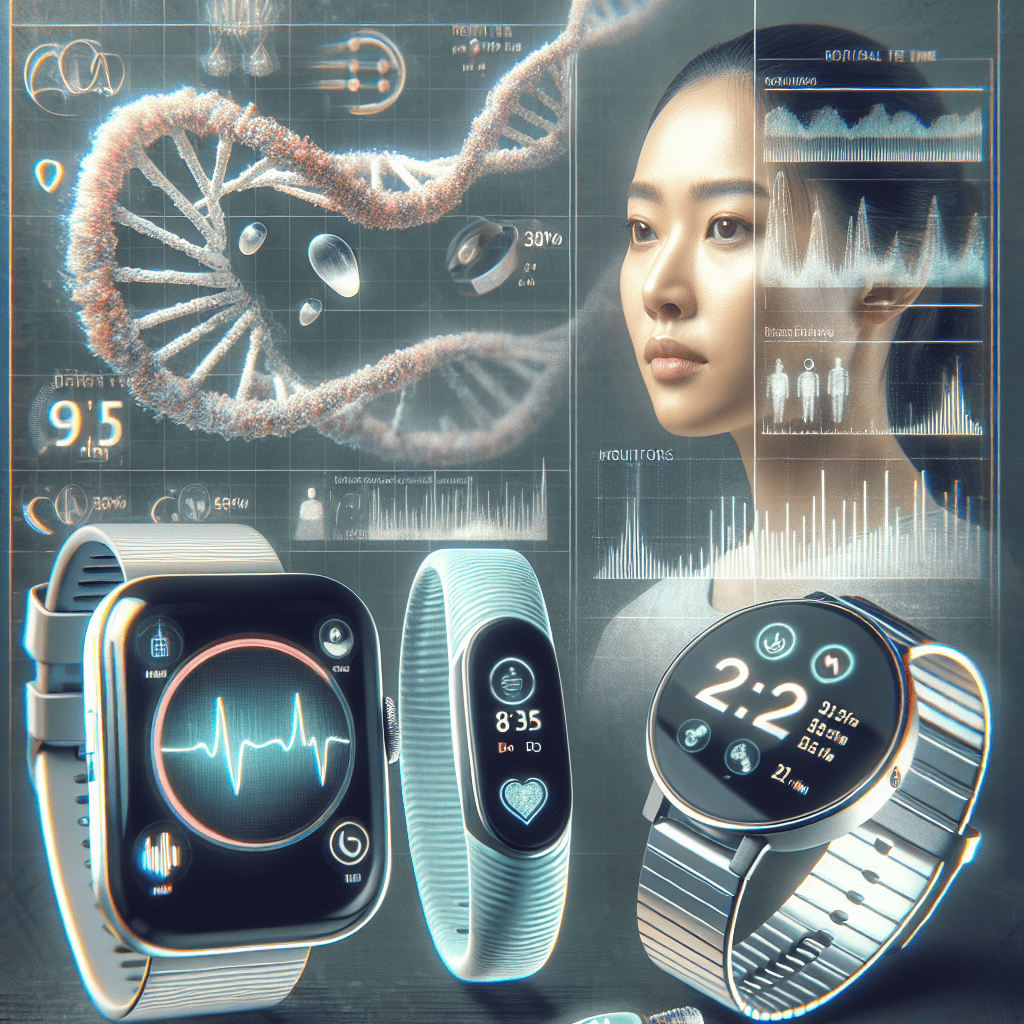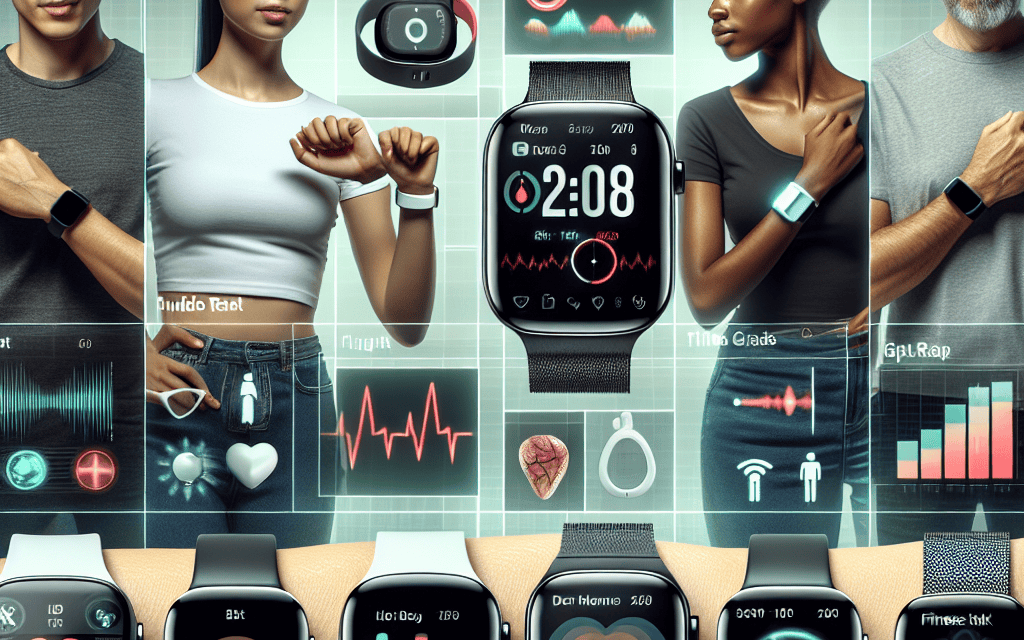-
Table of Contents
- Wearable Health Devices: Monitoring Health in Real Time
- The Technology Behind Wearable Health Devices
- 1. Sensors and Their Functions
- 2. Data Processing and Algorithms
- 3. Connectivity and Integration
- 4. Power Management and Battery Life
- 5. Design and User Experience
- The Benefits of Wearable Health Devices
- 1. Empowering Individuals with Health Insights
- 2. Encouraging Healthy Behaviors
- 3. Facilitating Preventive Healthcare
- 4. Enhancing Patient-Doctor Communication
- 5. Reducing Healthcare Costs
- Challenges and Limitations of Wearable Health Devices
- 1. Data Accuracy and Reliability
Wearable Health Devices: Monitoring Health in Real Time

In recent years, wearable health devices have revolutionized the way individuals monitor their health and fitness. These devices, ranging from smartwatches to fitness trackers, provide real-time data that can help users make informed decisions about their health. This article explores the various aspects of wearable health devices, including their technology, benefits, challenges, and future prospects.
The Technology Behind Wearable Health Devices
Wearable health devices are equipped with a variety of sensors and technologies that enable them to monitor different health parameters. Understanding the technology behind these devices is crucial to appreciating their capabilities and limitations.
1. Sensors and Their Functions
At the core of wearable health devices are sensors that collect data on various physiological parameters. These sensors include:
- Accelerometers: Measure movement and acceleration, helping to track steps, activity levels, and sleep patterns.
- Gyroscopes: Detect orientation and rotation, often used in conjunction with accelerometers to provide more accurate motion tracking.
- Optical Sensors: Use light to measure heart rate by detecting blood flow changes in the wrist.
- Electrodermal Activity Sensors: Measure skin conductance, which can indicate stress levels.
- Temperature Sensors: Monitor body temperature, providing insights into metabolic rate and potential illness.
These sensors work together to provide a comprehensive picture of the user’s health and activity levels.
2. Data Processing and Algorithms
The raw data collected by sensors is processed using sophisticated algorithms to provide meaningful insights. These algorithms analyze patterns and trends, allowing the device to offer personalized feedback and recommendations. For example, heart rate variability can be used to assess stress levels, while sleep patterns can be analyzed to improve sleep quality.
Machine learning and artificial intelligence play a significant role in enhancing the accuracy and functionality of wearable health devices. By continuously learning from user data, these algorithms can improve their predictions and recommendations over time.
3. Connectivity and Integration
Wearable health devices are designed to seamlessly integrate with smartphones and other digital platforms. This connectivity allows users to access their health data in real time and share it with healthcare providers if needed. Bluetooth and Wi-Fi are commonly used for data transmission, ensuring that users can stay connected wherever they go.
Integration with health apps and platforms enables users to track their progress over time, set goals, and receive personalized coaching. This connectivity also facilitates the development of a comprehensive health profile, which can be invaluable for preventive healthcare.
4. Power Management and Battery Life
One of the challenges in designing wearable health devices is managing power consumption while maintaining functionality. Advances in battery technology and power-efficient components have extended the battery life of these devices, allowing for longer periods of continuous monitoring.
Some devices incorporate energy-harvesting technologies, such as solar panels or kinetic energy converters, to supplement battery power. This innovation reduces the need for frequent charging and enhances the user experience.
5. Design and User Experience
The design of wearable health devices is crucial for user adoption and satisfaction. These devices must be comfortable, stylish, and easy to use. Manufacturers invest heavily in ergonomic design and user interface development to ensure that their products meet consumer expectations.
Customization options, such as interchangeable bands and watch faces, allow users to personalize their devices. This personalization enhances user engagement and encourages consistent use, which is essential for accurate health monitoring.
The Benefits of Wearable Health Devices
Wearable health devices offer numerous benefits that contribute to improved health outcomes and quality of life. These benefits extend beyond individual users to healthcare providers and the broader healthcare system.
1. Empowering Individuals with Health Insights
One of the primary benefits of wearable health devices is their ability to empower individuals with real-time health insights. By providing continuous feedback on activity levels, heart rate, sleep quality, and more, these devices enable users to make informed decisions about their health and lifestyle.
For example, a user who notices a decline in their daily step count may be motivated to increase their physical activity. Similarly, insights into sleep patterns can help users identify factors that contribute to poor sleep quality and make necessary adjustments.
2. Encouraging Healthy Behaviors
Wearable health devices are designed to encourage healthy behaviors through goal setting, reminders, and rewards. Many devices allow users to set personalized fitness goals, such as achieving a certain number of steps per day or completing a specific workout routine.
Reminders and notifications help users stay on track with their goals, while rewards and achievements provide motivation and a sense of accomplishment. This positive reinforcement can lead to lasting behavior change and improved health outcomes.
3. Facilitating Preventive Healthcare
By providing continuous health monitoring, wearable devices play a crucial role in preventive healthcare. Early detection of potential health issues, such as irregular heart rhythms or elevated stress levels, allows users to seek medical attention before these issues escalate into more serious conditions.
Wearable devices can also help users manage chronic conditions by providing real-time data on key health metrics. For example, individuals with diabetes can use wearable glucose monitors to track their blood sugar levels and make informed decisions about their diet and medication.
4. Enhancing Patient-Doctor Communication
Wearable health devices facilitate better communication between patients and healthcare providers by providing accurate and up-to-date health data. This data can be shared with doctors during appointments, enabling more informed discussions and personalized treatment plans.
For patients with chronic conditions, wearable devices can provide valuable insights into how their condition is being managed over time. This information can help doctors adjust treatment plans and provide more targeted interventions.
5. Reducing Healthcare Costs
The widespread adoption of wearable health devices has the potential to reduce healthcare costs by promoting preventive care and reducing the need for expensive medical interventions. By encouraging healthy behaviors and facilitating early detection of health issues, these devices can help prevent costly hospitalizations and treatments.
Additionally, wearable devices can improve the efficiency of healthcare delivery by providing doctors with accurate and timely data. This efficiency can lead to more effective treatment plans and better patient outcomes, ultimately reducing the overall burden on the healthcare system.
Challenges and Limitations of Wearable Health Devices
Despite their many benefits, wearable health devices face several challenges and limitations that must be addressed to maximize their potential. These challenges include issues related to data accuracy, privacy, and user engagement.
1. Data Accuracy and Reliability
One of the primary challenges facing wearable health devices is ensuring the accuracy and reliability of the data they collect. While advances in sensor technology





